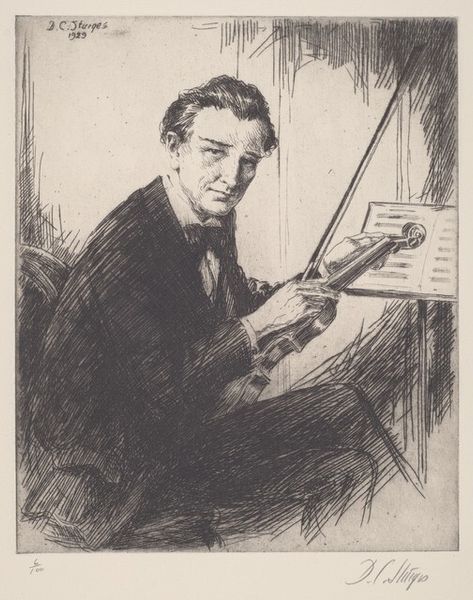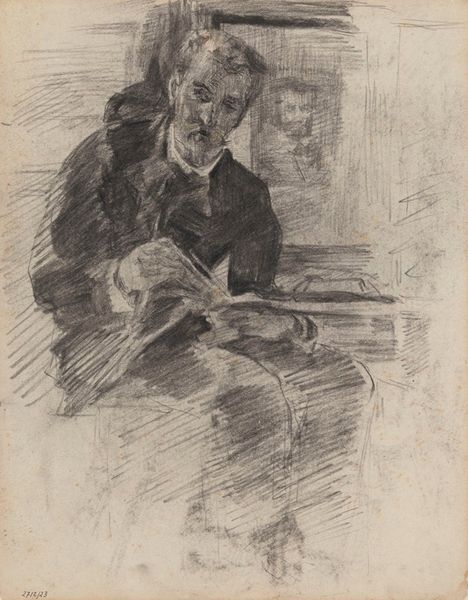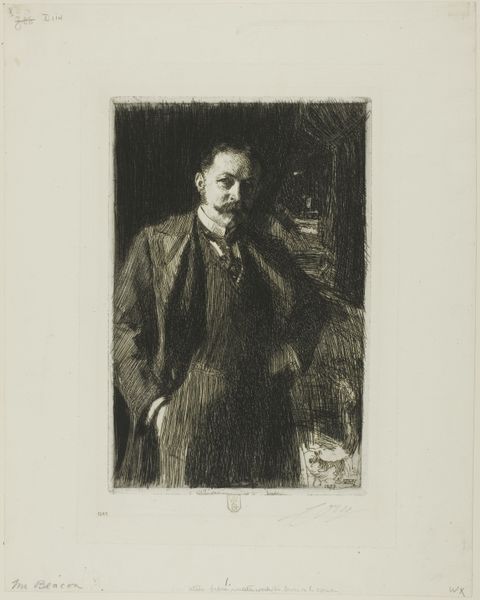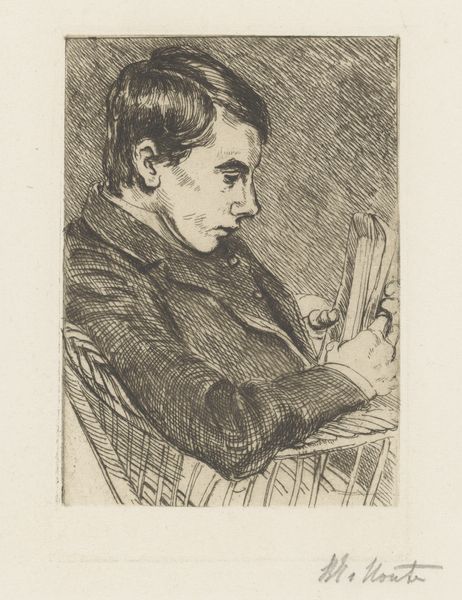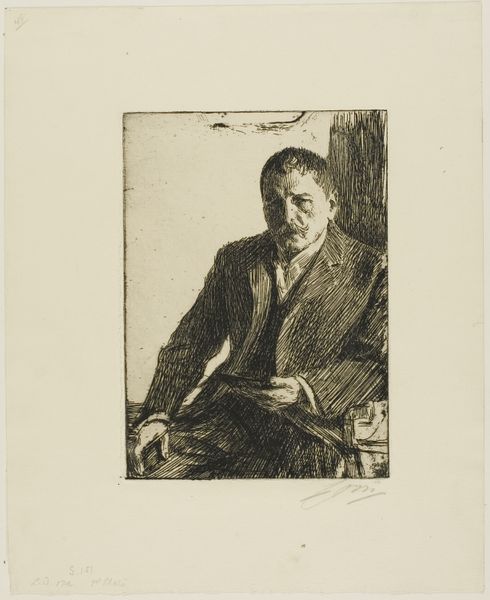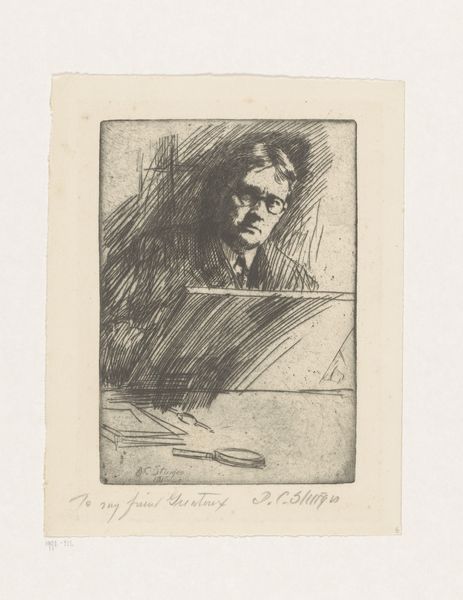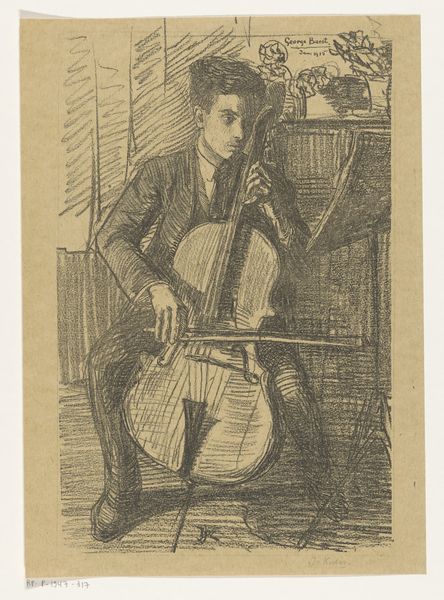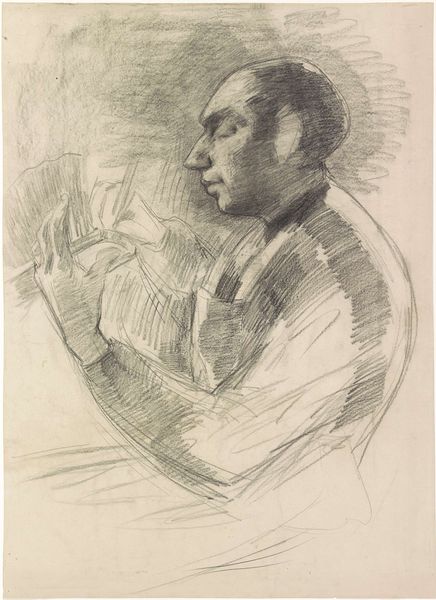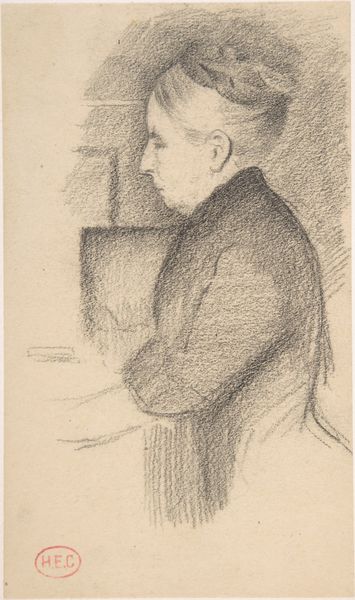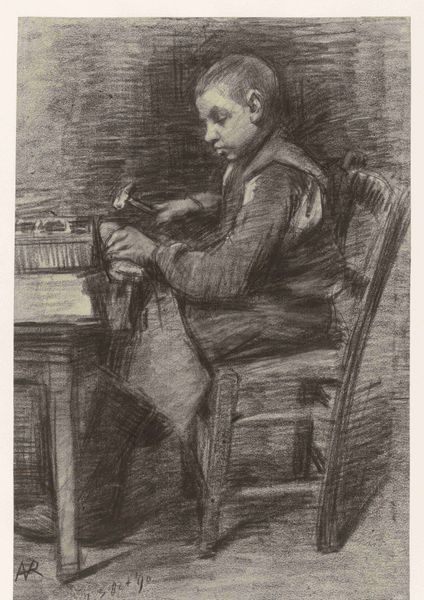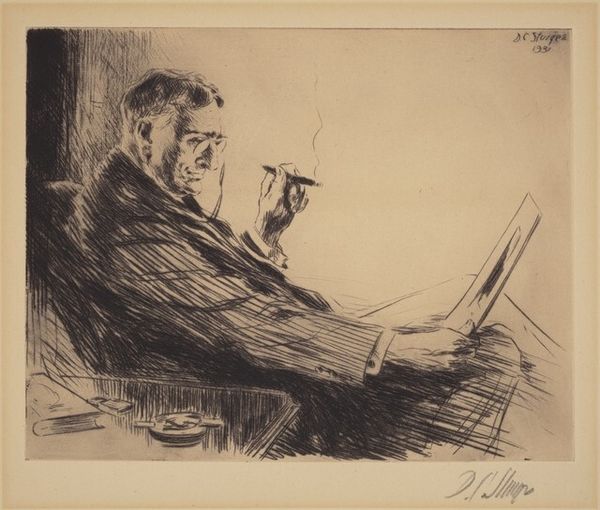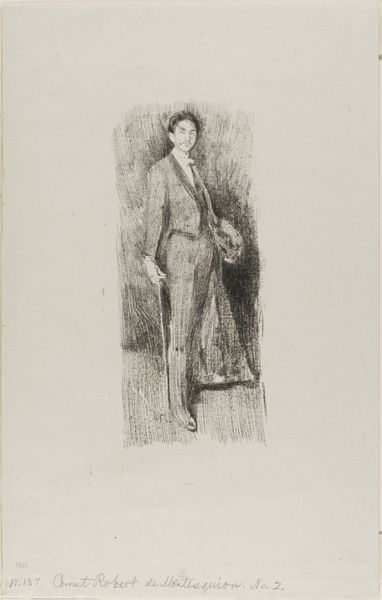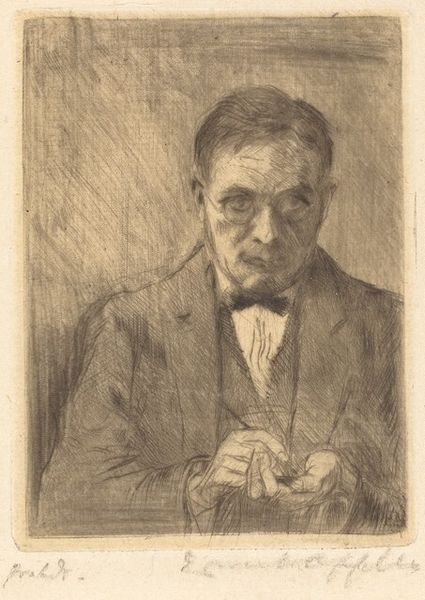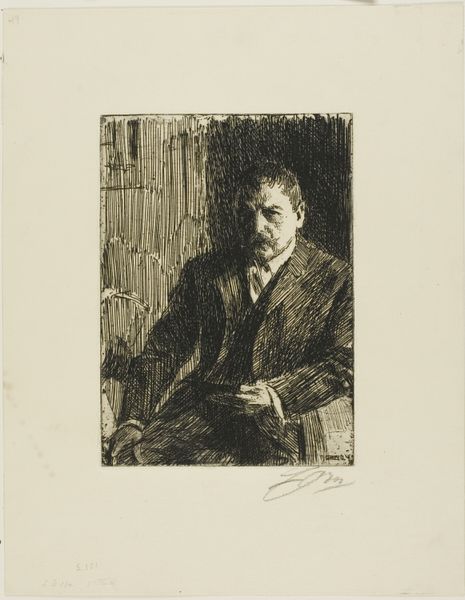
print, etching
#
portrait
# print
#
etching
#
united-states
#
realism
Dimensions: 9 7/8 x 8 3/16 in. (25.08 x 20.8 cm) (plate)16 1/8 x 12 7/8 in. (40.96 x 32.7 cm) (sheet)
Copyright: No Copyright - United States
Curator: Before us is "The Violinist," a 1929 etching by American artist Dwight Case Sturges. Editor: There's a melancholic quality to this image; the figure looks poised, yet contemplative, almost burdened, caught between performance and private reflection. The dark lines amplify this mood. Curator: It's intriguing to consider the medium – etching. Think about the physical labor, the scratching away at the metal plate, the inking, the pressing. Each print, an echo of that original process. The very materiality speaks to the musician's own repetitive, physical work to master his craft. Editor: The violin is, of course, a potent symbol. Its shape echoes the human form. Its sound evokes such deep emotional resonance across cultures. In this era, consider its associations with the rise of both classical appreciation, and popular Jazz in America. Curator: Precisely. Was this figure, perhaps, grappling with these shifting cultural influences in music, mediating what was once considered a division of high art and popular culture? It would be fascinating to research his concert programmes, repertoire and consider how widely distributed were his prints of classical musicians. Editor: And how about his clothing? His bowtie gives us a sense of aspiration, perhaps even of class distinctions tied to classical music performance at this time, yet is his face conveying something other than contentment? I sense an interesting tension here. What emotions and ideals is the image actually expressing? Curator: Perhaps the etching technique itself, the creation of tonal depth from laborious strokes, resonates with this tension; his furrowed brow certainly conveys intense concentration. The labor to make an etching mirrors, in a way, the rigorous discipline needed to become a violinist, and both processes are revealed together. Editor: Thinking about the violinist’s attire alongside the violin itself brings so much to mind about cultural ideals of virtuosity at the time, and that melancholic tone – is that hinting at a change to such things in society? Fascinating. Curator: Absolutely. Thinking through these materials really provides new avenues to consider social shifts and cultural change in the context of artistic representations in 1920's America.
Comments
No comments
Be the first to comment and join the conversation on the ultimate creative platform.
